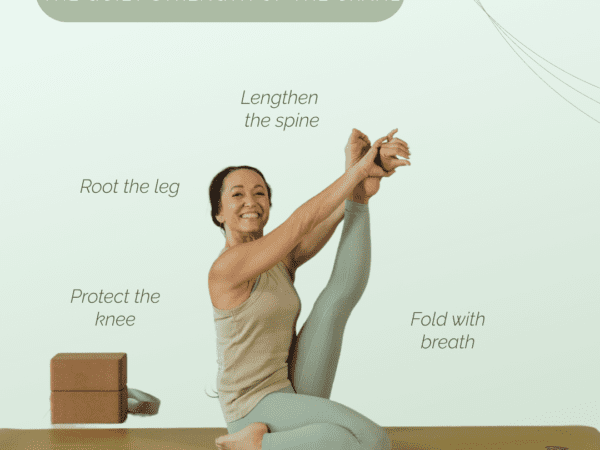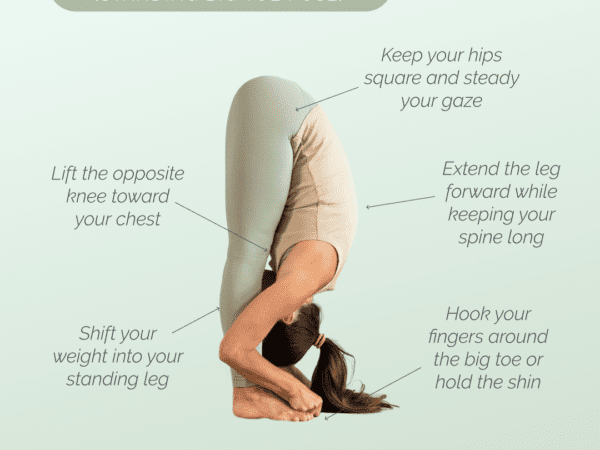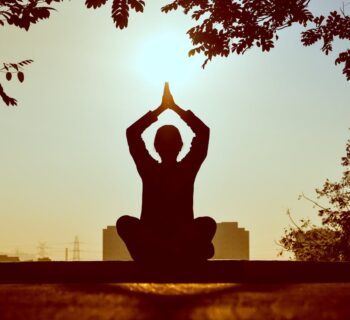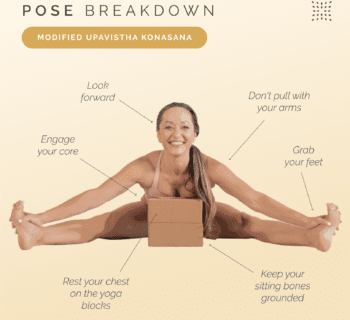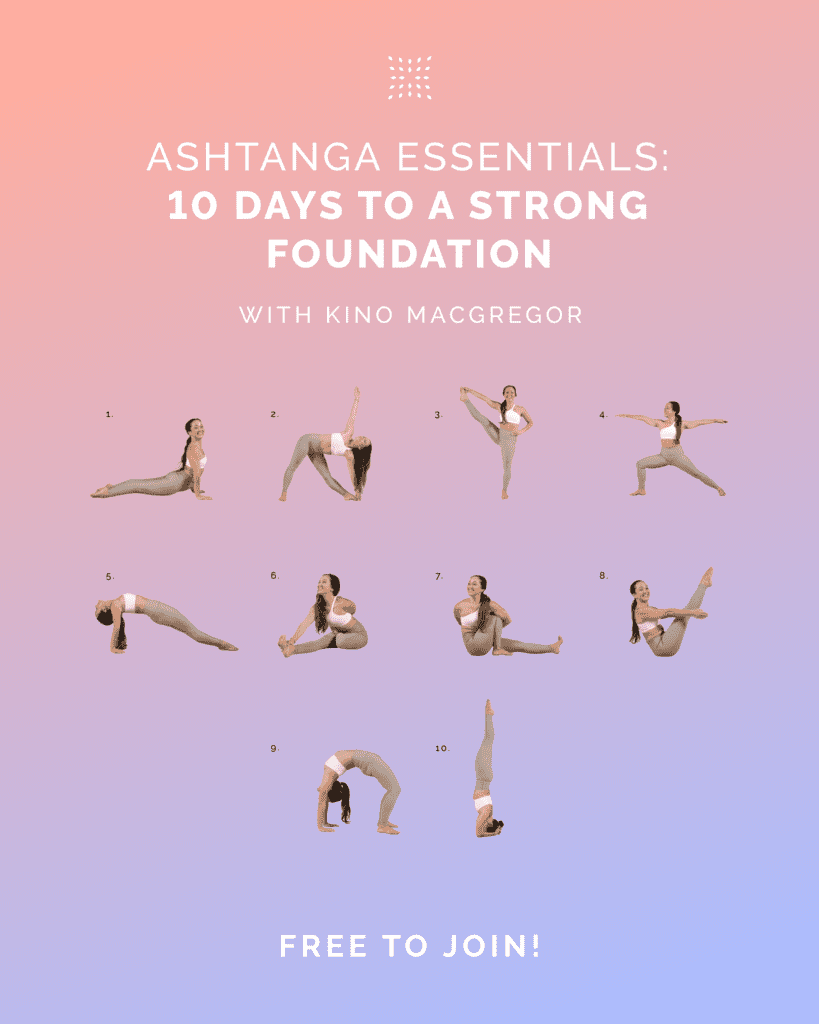Half moon pose is a good pose to stretch your side body and lengthen your spine during practice. Whether you’re a seasoned yogi or a newcomer to the practice, this step-by-step guide will provide insights, tips, and variations to accommodate all levels. Prepare to delve into the depths of this posture, as we explore the physical and mental benefits it brings, and equip you with the knowledge and confidence to make half moon pose an integral part of your yoga journey.
Benefits of Half Moon Pose
Half moon pose, with its graceful lateral stretch and extension, offers a plethora of benefits for both the body and mind. Here are some key advantages of incorporating this pose into your yoga practice:
Spinal Flexibility:
Half moon pose involves a deep lateral stretch along the spine, promoting flexibility and suppleness. Regular practice helps maintain a healthy range of motion in the vertebral column.
Strengthens Core Muscles:
The engagement required to stay balanced in half moon pose activates the muscles of the abdomen and obliques. This contributes to a stronger core, providing stability and support for the entire torso.
Tones Waist and Hips:
The side-bending nature of the pose targets the muscles around the waist and hips. This can lead to toning and sculpting of these areas, promoting a more defined and streamlined silhouette.
Improves Balance and Coordination:
Executing half moon pose challenges your balance and coordination, requiring focus and mindfulness. Regular practice enhances your ability to find stability, not only in this pose but also in various aspects of daily life.
Stretches Side Body Muscles:
The lateral extension created in half moon pose stretches the muscles along the sides of your torso, including the intercostal muscles between the ribs. This stretch can alleviate tension and enhance overall flexibility.
Opens Chest and Lungs:
The upward reach of the arms in this pose encourages an opening of the chest and lungs. This can lead to improved respiratory function and increased lung capacity.
Encourages Mental Clarity:
The combination of breath awareness and focused concentration in half moon pose promotes mental clarity and mindfulness. It provides a moment of stillness and presence, allowing you to cultivate a calm and centered mind.
Enhances Circulation:
The stretch and extension of the body in half moon pose can enhance blood circulation. Improved circulation helps deliver oxygen and nutrients to various parts of the body, supporting overall vitality.
Alleviates Back Discomfort:
Individuals experiencing mild back discomfort may find relief through the gentle stretching and strengthening aspects of half moon pose. Always practice with awareness and avoid overexertion.
Promotes a Sense of Lightness:
The graceful and elongated nature of half moon pose can evoke a sense of lightness and expansiveness. This contributes to an overall feeling of well-being and harmony.
Incorporating half moon pose into your routine offers a holistic approach to physical fitness and mental well-being. As you explore and deepen your practice, you’ll likely discover additional benefits that resonate with your unique body and journey.
Contraindications
While half moon pose offers numerous benefits, it’s important to be aware of potential contraindications and practice the pose with caution, especially if you have certain health conditions or concerns. Here are some contraindications to consider:
Back Injuries:
Individuals with chronic or acute back injuries, especially those affecting the spine or discs, should approach half moon pose with caution. Consult with a healthcare professional or experienced yoga instructor before attempting this pose.
Neck Issues:
If you have neck problems or recent neck injuries, be mindful of the neck position during half moon pose. Avoid excessive strain on the neck and consider modifying the pose if necessary.
High Blood Pressure:
Individuals with uncontrolled high blood pressure should be cautious when practicing poses that involve deep stretching and inverted positions. Modify the pose as needed and consult with a healthcare provider.
Vertigo or Dizziness:
The balance aspect of Half Moon Pose may trigger dizziness or vertigo in some individuals. If you experience these sensations, it’s advisable to practice the pose near a wall for support or modify as needed.
Hip Issues:
Those with hip injuries or conditions such as sciatica should approach this pose with caution. If you feel any discomfort in the hips, modify the pose or skip it altogether.
Shoulder Problems:
Individuals with shoulder injuries or instability should be cautious during the arm-raising portion of the pose. Modify the arm position or choose a gentler alternative.
Pregnancy:
Pregnant individuals, especially in the second and third trimesters, should avoid deep twists and excessive stretching. It’s recommended to consult with a healthcare professional and modify the pose or skip it if needed.
Headaches or Migraines:
If you suffer from frequent headaches or migraines, the extended position of the neck and head in half moon pose may exacerbate symptoms. Approach the pose mindfully and avoid straining the neck.
Heart Conditions:
Individuals with heart conditions or cardiovascular issues should practice with caution. The intense stretch and potential increase in heart rate may not be suitable for everyone. Consult with a healthcare provider before attempting.
Recent Surgery:
If you’ve undergone recent surgery, particularly on the spine, hips, or shoulders, consult with your healthcare provider before attempting half moon pose. Ensure that your body has healed sufficiently before engaging in such stretches.
Always listen to your body and consult with a qualified healthcare professional or yoga instructor if you have any concerns or pre-existing health conditions. It’s essential to prioritize safety and modify the pose as needed to suit your individual circumstances.
How to do Half Moon Pose
Begin by standing tall at the top of your mat with your feet together. Engage your thighs, lift your chest, and bring your palms together in front of your heart.
Inhale as you raise your arms overhead, keeping your palms pressed together. Lengthen your spine, and engage your core muscles.
Interlace your fingers, release the index fingers, and point them upward. Extend your arms while keeping your palms together.
Exhale and shift your hips slightly to one side, creating a lateral stretch through your torso. Maintain a strong connection between your feet and the mat.
Inhale deeply and elongate your spine. As you exhale, lean your upper body to the side, creating a stretch along the entire length of your torso.
Ensure your shoulders remain relaxed and away from your ears. Feel the stretch along your side body from your hip to your fingertips.
Hold half moon pose for 20-30 seconds, breathing steadily. Feel the opening along the side of your body and the engagement of your core.
Inhale and return to the center, bringing your arms back overhead with palms pressed together.
Exhale as you shift your hips to the opposite side and repeat the stretch, ensuring both sides of your body receive equal attention.
After completing both sides, release your arms to your sides and return to Mountain Pose. Take a moment to stand tall, breathe deeply, and appreciate the effects of the pose.
This variation of half moon pose provides a wonderful stretch for the sides of your body, promoting flexibility and balance. I hope this step-by-step guide is helpful for your practice.
Are you looking for more guidance on your yoga journey? Sign up for Omstars to get access to thousands of yoga classes in the comfort of your own home. Click here to start your subscription.



